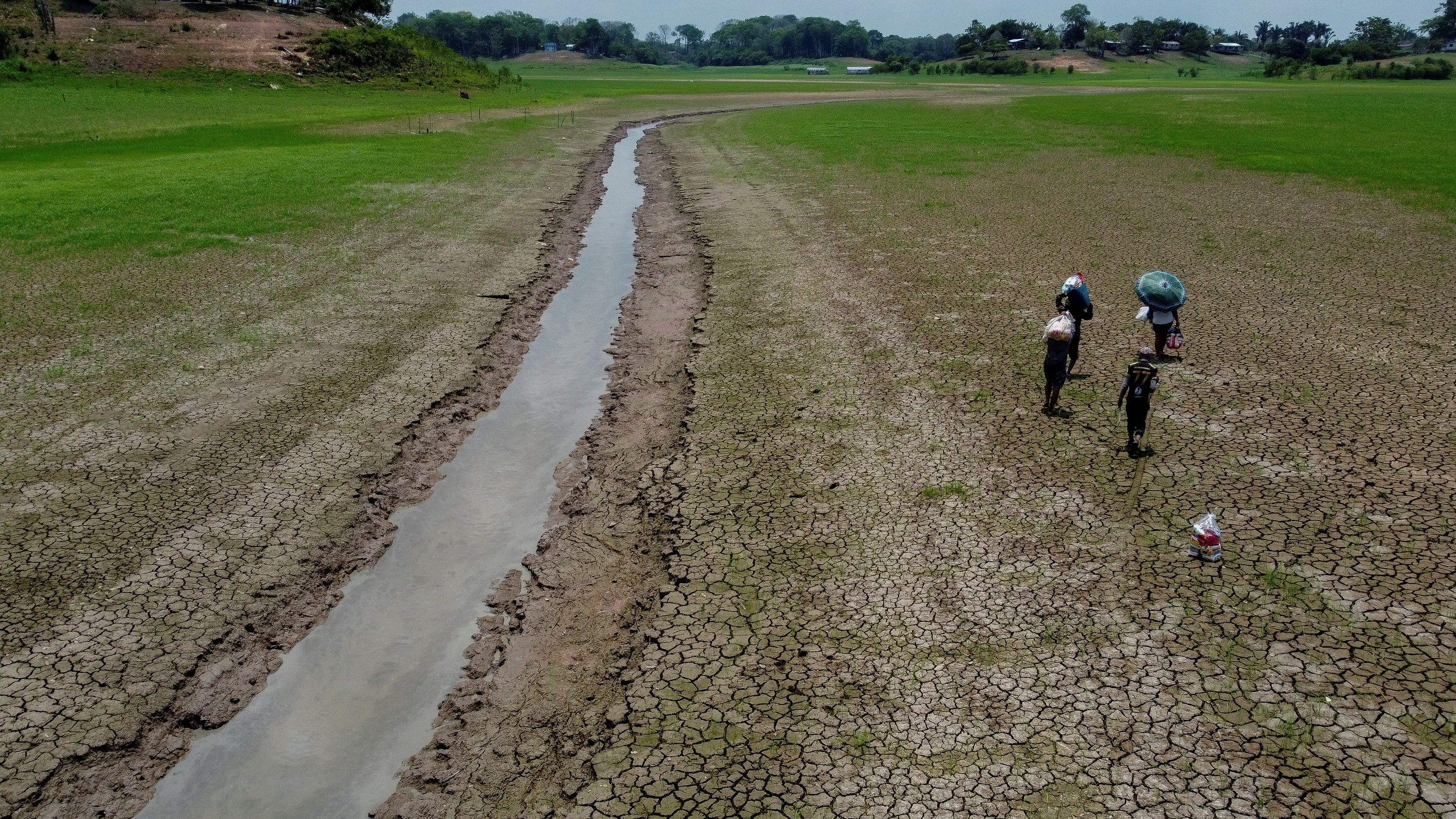
Representative image of a dried up river bed.
Credit: Reuters Photo
The fall in the water level of the Brahmaputra river in Assam has caused concern and has led to dire predictions about its consequences. The ferry services in some sections of the river were suspended last week, though they resumed later. One ferry got stuck in the sand for many hours, causing panic. Though the water levels go down in many rivers after the monsoon, the decline this year is reported to be unprecedented. Rivers in other parts of the country are also losing water. There are many reasons for that, including irrigation, fall in groundwater levels, and loss of forest cover. The flow of water in rivers like the Krishna and the Varahi has declined considerably over the years. A World Bank report has said that India’s aquifers will be in a critical position in the next 20 years and that will impact the flow of water in rivers. Climate change is an important reason for the declining flow in many rivers.
Climate change has swelled and emaciated rivers across the world, causing serious damage in many ways. The Colorado River is thinning out and the US government has taken emergency measures to save it. The flow in the Yangtze slowed down, causing a serious power crisis last year in parts of China. Shipping and navigation has been affected in the Rhine and the Danube in Europe. Climate change affects nature in different ways. While rivers that are fed by glaciers produce floods when the ice-cap melts, there are others that dry up and unsettle life on their banks. Both situations create equally disastrous consequences. The flow in the Nile is projected to vary as much as 50% in the coming years, pointing to chances of both flooding and drought. Most rivers in the world are creating new records of highest and lowest water levels.
Many of the rivers experience unprecedented floods in some months and water levels decline to very low levels in other months. The Brahmaputra saw high floods a few months ago but is now flowing near dry in many places. Pollution caused by the dumping of plastic and other materials is one reason. There are local factors that adversely affect the flow of water in every river. But one common reason is climate change. Human life depends crucially on the health of rivers. They are important for agriculture, drinking water, trade and transport purposes. Their erratic behaviour will cause serious disruptions and hit lives and economies. The problem with the rivers should be addressed at the level of each river and within the framework of the fight against climate change.